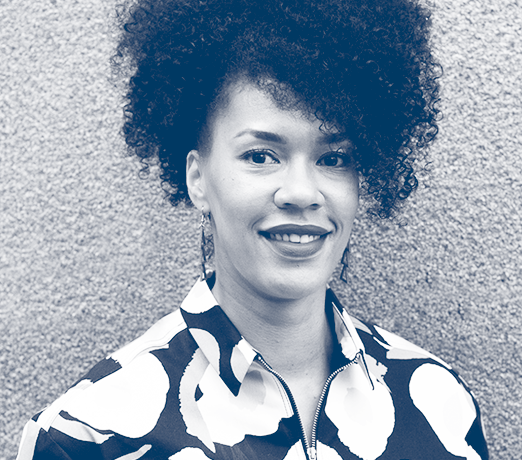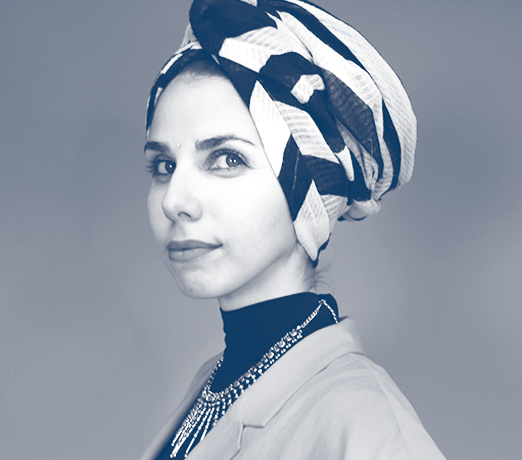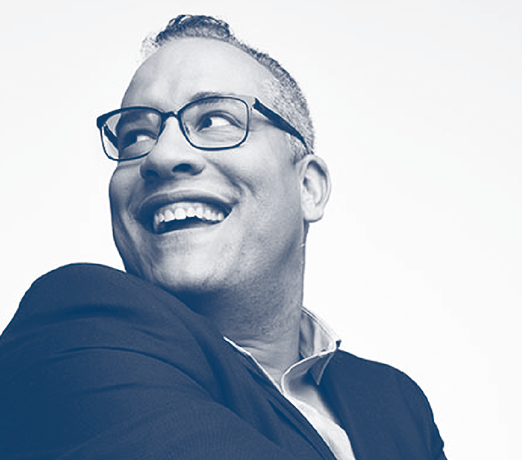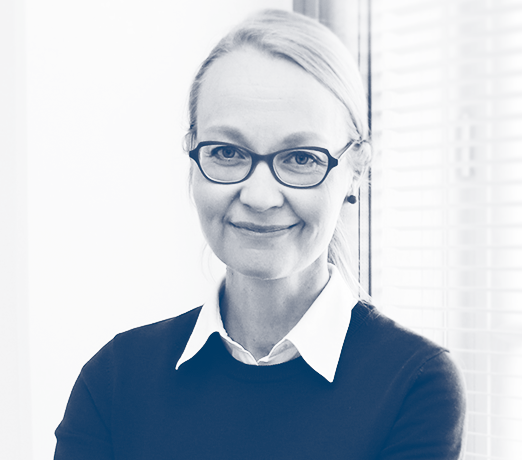Behind the Type
The Polite Type is an open-source font that rewrites hurtful words, replacing them with more inclusive ones. Led by Tietoevry, The Polite Type has been developed in close collaboration with a diverse team with wide-ranging backgrounds in anti-racism work, gender research and D&I consulting. Here you can read more about the parties involved, their thoughts on cyberbullying and how to fight it.
 Kia Haring
Kia Haring
 Michaela Moua
Michaela Moua
 Sara Salmani
Sara Salmani
 Doug Melville
Doug Melville
 Jonna Louvrier
Jonna Louvrier
 Olli Alanen
Olli Alanen
 Kia Haring
Kia Haring
Promoting inclusive online behaviour – the story behind the Polite Type
Cyberbullying is detrimental to a victim's self-esteem. It affects the victim’s daily work performance and causes physical symptoms. Close to a fifth of bullied young people have reported that they have difficulties sleeping because of the anxiety caused by bullying. Long-term effects include depression which can lead to life-threatening situations, according to a UNESCO report*.
During the spring 2020, we worked with The Children & Youth Foundation in Finland and various local lower secondary schools. We discovered that over 65% of the students who participated in our project had dealt with hate speech online. These statistics were shocking – and what was equally shocking was finding out how the bullies insulted their victims.
The coronavirus pandemic and cyberbullying
Within the past months the world has faced lockdowns and people have withdrawn to the safety of their homes. Many began working or studying online, and the world at large experienced a surge in the use of digital services. But the pandemic has also had its effects on cyberbullying.
- Students’ social lives faced a change, as school grounds moved online. What changed also was the access to talk to counsellors and teachers, who have a critical role in protecting students from bullying
- As people could not meet in real life, feelings of isolation increased, which may have made people more vulnerable to cyberbullying
- Communicating online has created a sense of distance between the person writing the comment and the person reading it, which may detach bullies from facing consequences – and further increase ignorance
A typeface for equality
Most fonts are software which means that they can be programmed to follow certain rules. So, what if we created a set of rules that would make a font recognize hateful words and replace them with neutral ones?
We wanted to ignite an important discussion about hate-speech and take concrete anti-bullying action. But would the typeface be against freedom of speech? And would further development possibly create a new issue?
We believe the right for freedom of speech includes the right to disagree – but hate speech is not a valid way to voice disagreement. We want bullies to consider their actions online. Why should anyone use their voice to tear other people down?
We present our work as an open source font – The Polite Type, and welcome other creative and innovative people and organizations to join in on this cause.
Our aim
We have the power and the freedom to express ourselves in more polite ways. We want to invite everyone to join the initiative and to stand up against cyberbullying. Together we can change the world.
With the Polite Type we promote a constructive discussion culture by concretising cyberbullying. We believe that with our capabilities, responsible use of technology, and in collaboration with our community, we can create a brighter future where diversity and inclusion are the norms.
(*) According to UNESCO / Behind the numbers: ending school violence and bullying (2019) / ISBN – licensed under 978-92-3-100306-6. https://unesdoc.unesco.org/ark:/48223/pf0000366483. The present work is not an official UNESCO publication and shall not be considered as such.
 Kia Haring
Kia Haring
Words do hurt: teaming up with students to fight cyberbullying
Sticks and stones may break my bones, but words will never hurt me goes the old saying. But when hurtful words reach you wherever you go, the saying starts to feel outdated. Social media allows great things, but it also allows bullies to discriminate without consequences. For the one who gets bullied the hateful comments build up.
“Bullying makes me believe less in myself” – a student
Social media offers tools to block users and delete hateful comments. These tools are powerful in erasing bullying, but they don’t prevent it. It’s an issue since young people are especially vulnerable to hate speech. On top of that, our brains have a bias to remember negative comments far more often than positive ones. Harsh words catch us off guard, they feel like a negative spike to our average day – and they can stick with us for life.
“People have told me I’m fat and that I can’t wear certain clothes” – a student
Tietoevry wanted to raise awareness on this issue and developed a font to disarm cyberbullies by replacing hateful words with more inclusive ones. Young people are fluent with social media and by collaborating with teenagers from various lower secondary schools and The Children & Youth Foundation in Finland we created the Polite Type font that blurs out bullying.
“My friend called me a ***** on Whatsapp” – a student
We held a workshop co-organized with the foundation to ask students what type of hate speech they have had to face. We expected them to have faced bullying, but what they dealt with still shocked us. Over 62% of students that participated in our workshop had dealt with some hate speech face to face and over 65% had dealt with it online.
“Hate speech means nothing because I hear it every day” – a student
What shows just how things change from offline to online is that 9% of students reported to have experienced hate speech often face to face, but 25% reported to have faced hate often on social media. To experience cyberbullying online – often – is the reality for every fourth student.
“Just because I disagree with someone, it doesn’t make me a *****” – a student
When we express ourselves online, we lose and compromise the tone, the body language and the possibility to re-explain ourselves. Disagreeing is not the same as hate speech: what we say is always left up to be interpreted by the one reading it. But hate speech exists online. It takes many forms as people try and hide behind freedom of speech.
“Words do hurt more than actions” – a student
But hate speech is not freedom of speech. It seeks out conflicts, it tears down people’s personal lives, it’s meant to hurt and invade one’s privacy. Hating is not our freedom. What is our freedom, is to know where the line needs to be drawn.
Looking back at the old saying, there is a need for an update.
As one student put it: words do hurt.
Join us on the initiative against online bullying. The open-source font can be tested on the website and downloaded for offline use. Anyone can access the font. Please join us, test and try the font, and share your thoughts and feelings. Together we can find ways to use technology to encourage people to be kinder to each other – and to create a more inclusive everyday.
 Kia Haring
Kia Haring
Words matter - working towards inclusive online behaviour
As a Nordic digital services and software company, we at Tietoevry wanted to advance the safety and wellbeing of the young – and the responsible use of technology. Together with our long-term partner Children and Youth Foundation we created something tangible to raise awareness on cyberbullying. We hope to create a long-lasting impact through public discussion.
One of the trickiest parts of creating The Polite Type was defining the vocabulary. The idea for the font sprang from two realizations. Firstly, language use in digital contexts can be harsh partly because it’s easier to be write out cruel words than it is to voice them face to face. Secondly, the role of language in upholding limiting societal structures has become a big topic in public discourse in recent years. This topic can be seen for example in the discussion around pronouns and inclusive job titles. What if, we thought, technology could help us be more considerate in the way we speak and act online?
We created the word bank with the help of linguists, young people, and diversity and inclusion experts. We analyzed use of online language, identified potential vulnerabilities, and delved into the experiences of cyberbullying and name calling the participating youth told us about, and asked them how they would like to see the issue addressed.
The Polite Type is not about censorship, it’s about respect to other individuals and the consideration of the other’s feelings. The font doesn’t stop you from disagreeing, arguing or stating your opinion. The purpose is not to decide on which words are the right ones to express yourself and which ones not. The font does, however, invite you to think about the words you use to do so.
The word bank includes words you might use because you don’t know any better, dated expressions that are now considered offensive, slurs that are only used out of malice and words that are generally considered rude and offensive. The idea is always to either suggest a more neutral way to say it or direct the user to look for another expression altogether. In finding the replacements, we have referred to our diversity and inclusion experts, guidelines provided by various advocacy organizations and our workshop findings. Some words without a clear replacement will just get blurred. In the first version of the font, also the contextual understanding is limited.
As this project evolves, we hope that the font will evolve to be able to understand context and expand to new languages altogether. We also hope this will spark an important discussion on the possibilities of technology to create a more inclusive world and nudge us into being kinder to each other. We will also continue to develop the font based on user experiences. You can try out the font and do let us know if it doesn’t recognize an offensive word, or if there is a better neutral word the font could suggest instead.
 Kia Haring
Kia Haring
Join us in the initiative: promoting inclusive and responsible online behavior
The global coronavirus pandemic has moved many events of our lives to our homes. Students all around the world have faced a change, as lessons have moved online, and people have traded office spaces to home offices. Living in the digital world has become our new normal during this time, but it is not without its downsides – one of which is the increased chance to encounter cyberbullying.
For the past months, we have been working with The Children & Youth Foundation in Finland, organizing workshops with various local lower secondary schools. Over 65% of the students who participated in the project had dealt with hate speech online. Cyberbullying impacts the victim’s work performance and causes physical symptoms. According to a UNESCO report*, close to a fifth of bullied youth have reported that it has caused them anxiety. Long-term effects of bullying include depression.
Discrimination online can happen anywhere
The young people who participated in this project mentioned that they encountered hate speech on many different sites and apps. Cyberbullying and discrimination can take place in online forums and games, in direct messages, and comments – on any particular site. Even newspaper comment sections aren’t free of hurtful comments and hateful opinions.
Discrimination sees no age or place. It can happen in college. It can happen in elementary school. And it happens at workplace too. That’s why a tool like the Polite Type could be the way to set the example and the new standard for what is to be tolerated and what should not be left to affect our performance at work or at school.
The technology of shaping the future
We at Tietoevry consider inclusivity and diversity important values that have helped us to shape our policies and improve our solutions. We have improved the ways we navigate and experience the digital world within our organization, and we realize our capabilities to promote responsible use of technology outside our organization, too. Many of those who have worked on The Polite Type have experience of cyberbullying, either personally or through family and friends.
Technological innovations are shaping our lives, from the ways we take care of our daily tasks and stay connected, to how cities organize essential services. And we are changing too, by realizing the importance of diversity and inclusivity as core values. Companies play a big part in bringing inclusivity to practice. Making products that serve many instead of some, and involving policies that benefit all instead of a few, help create new standards.
Increasing inclusivity online – participate with us!
We continue to develop the font based on user experiences – and invite you to take part!
For people interested in using the font. We encourage you to use the font at home with your children or try it out in classroom discussions – or even just by yourself.
- Testing the font acts as a conversation starter to discuss offensive language use online with your kids or your students.
For people interested in developing the font. We appreciate and encourage all feedback on improving The Polite Type. Share your comments and let us know if you would like to participate in the co-development of the font, test it in your company or use it in your software.
#thepolitetype